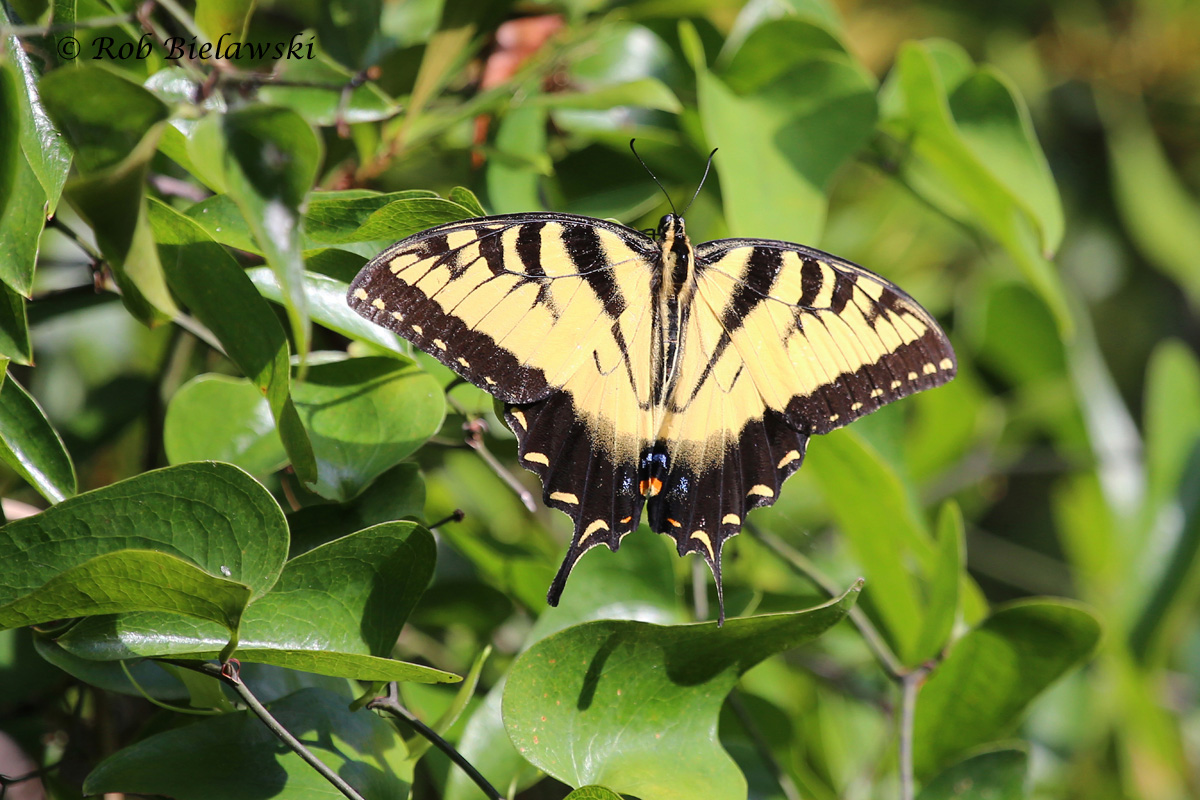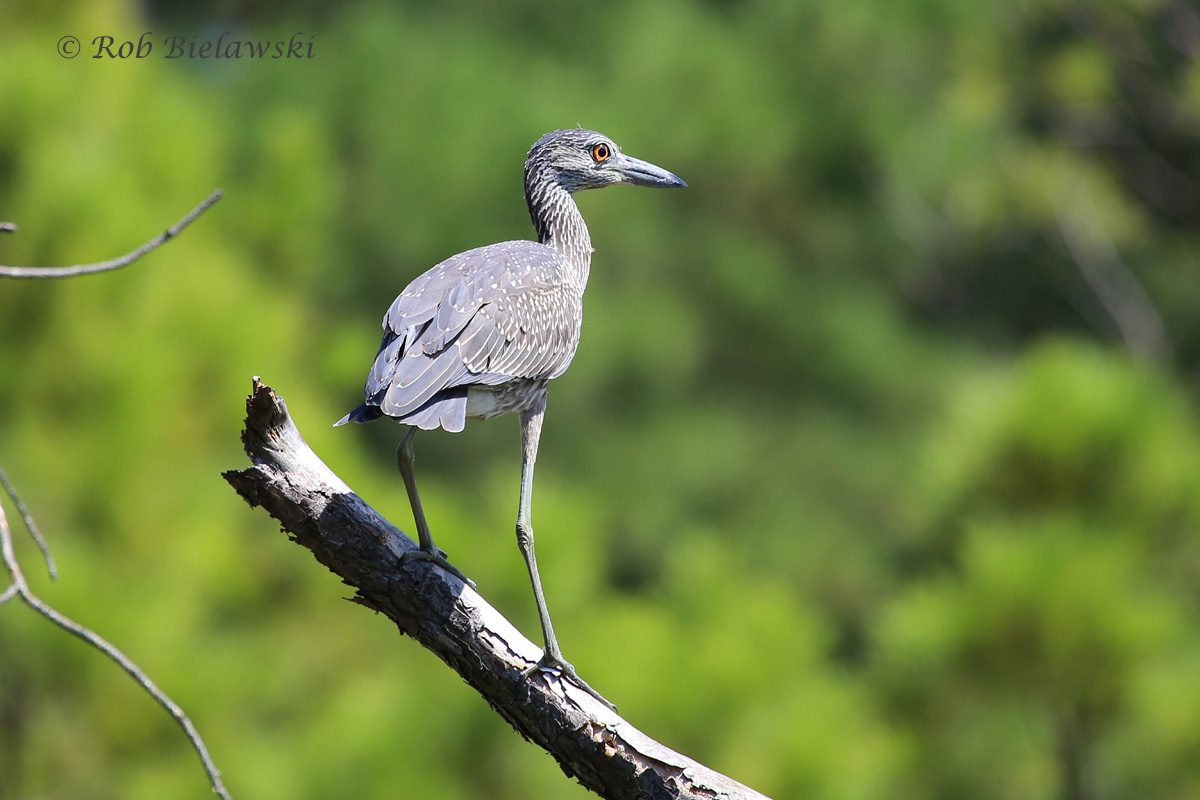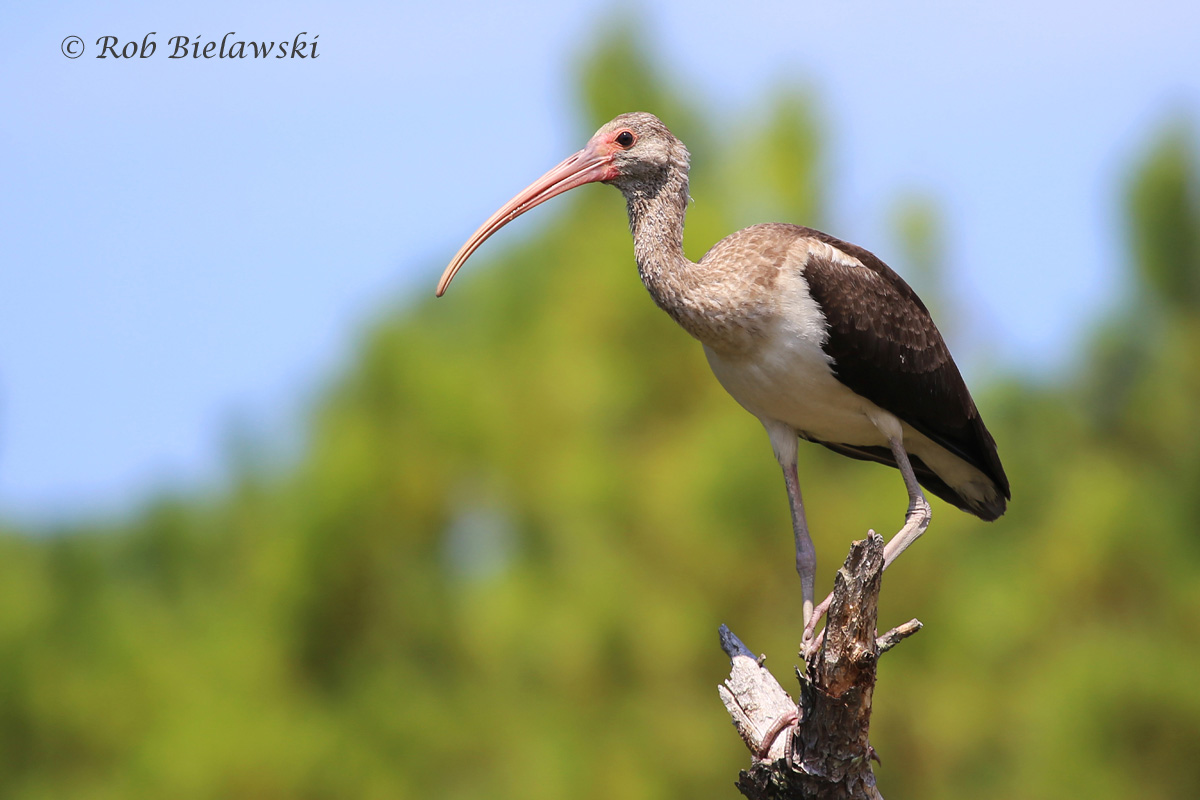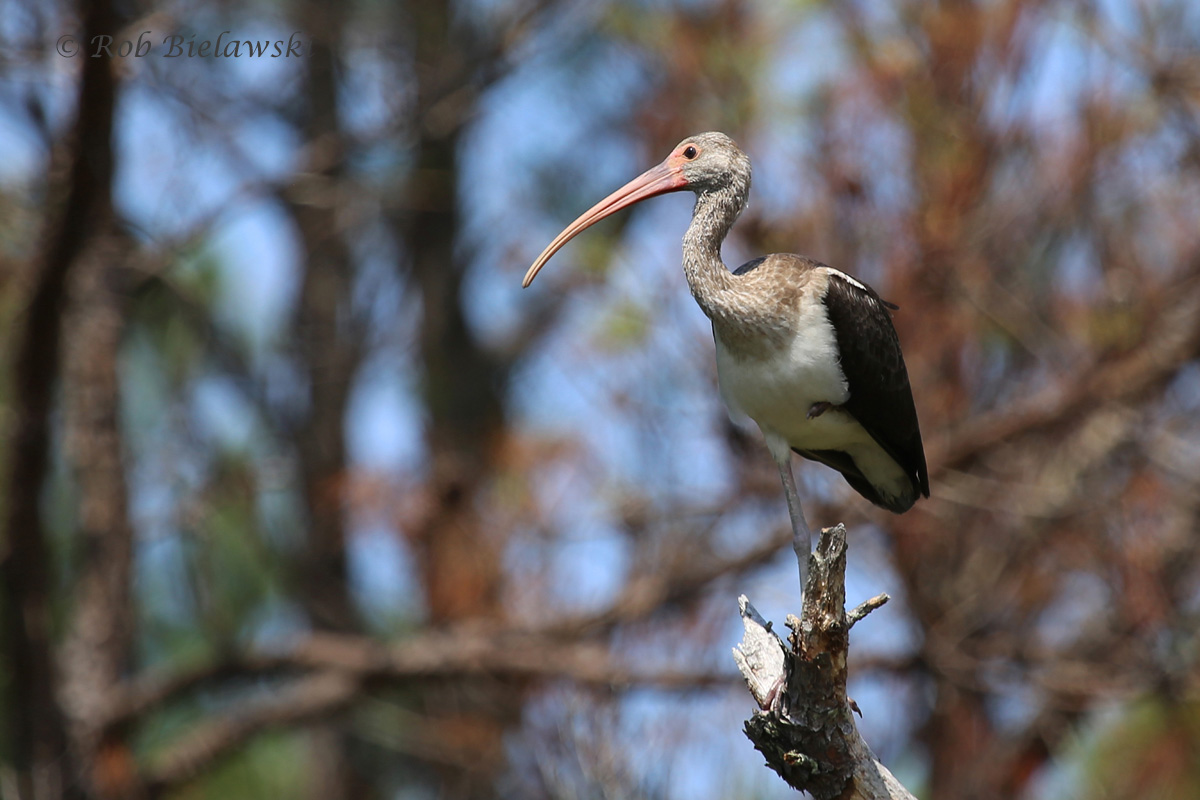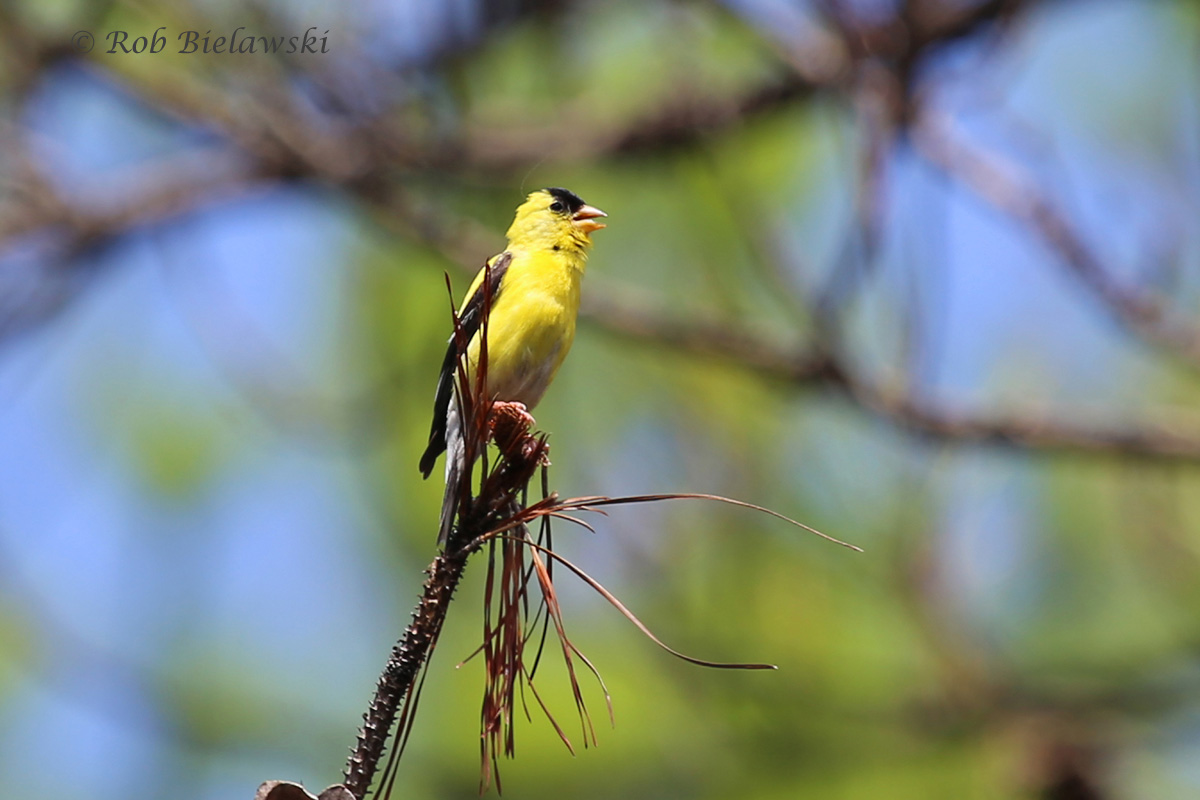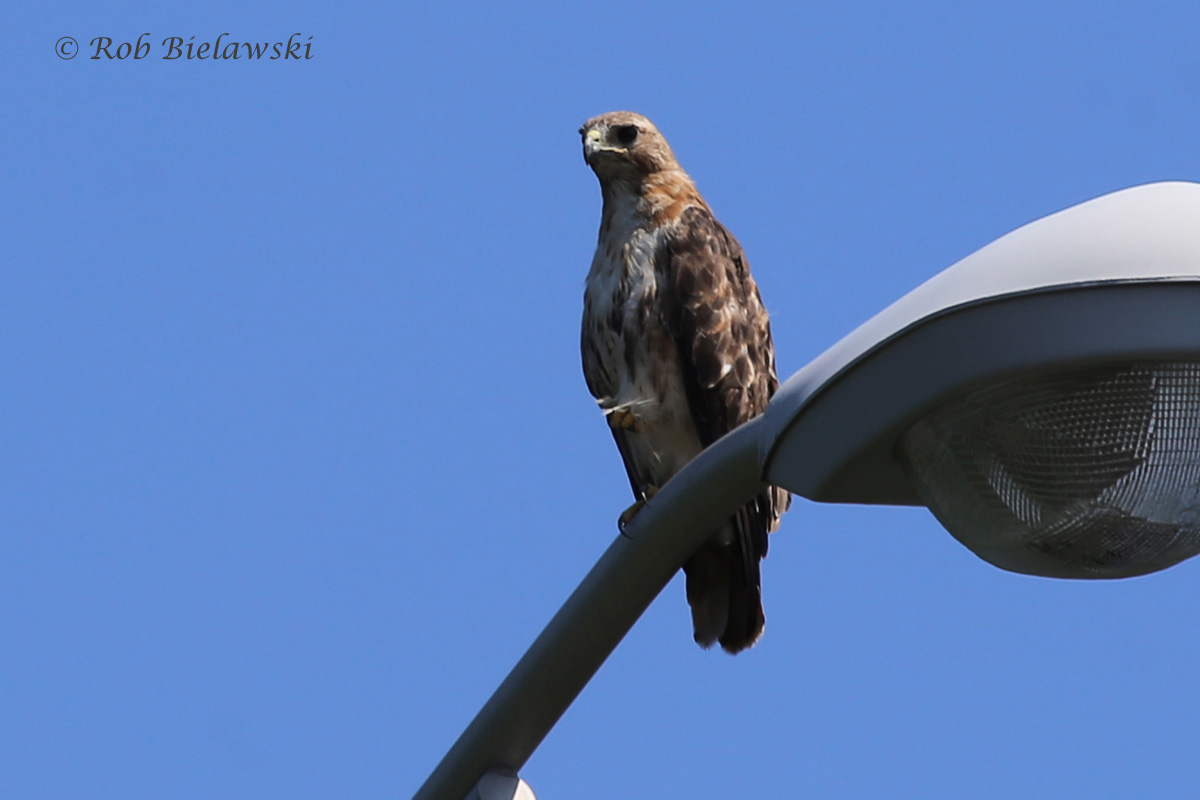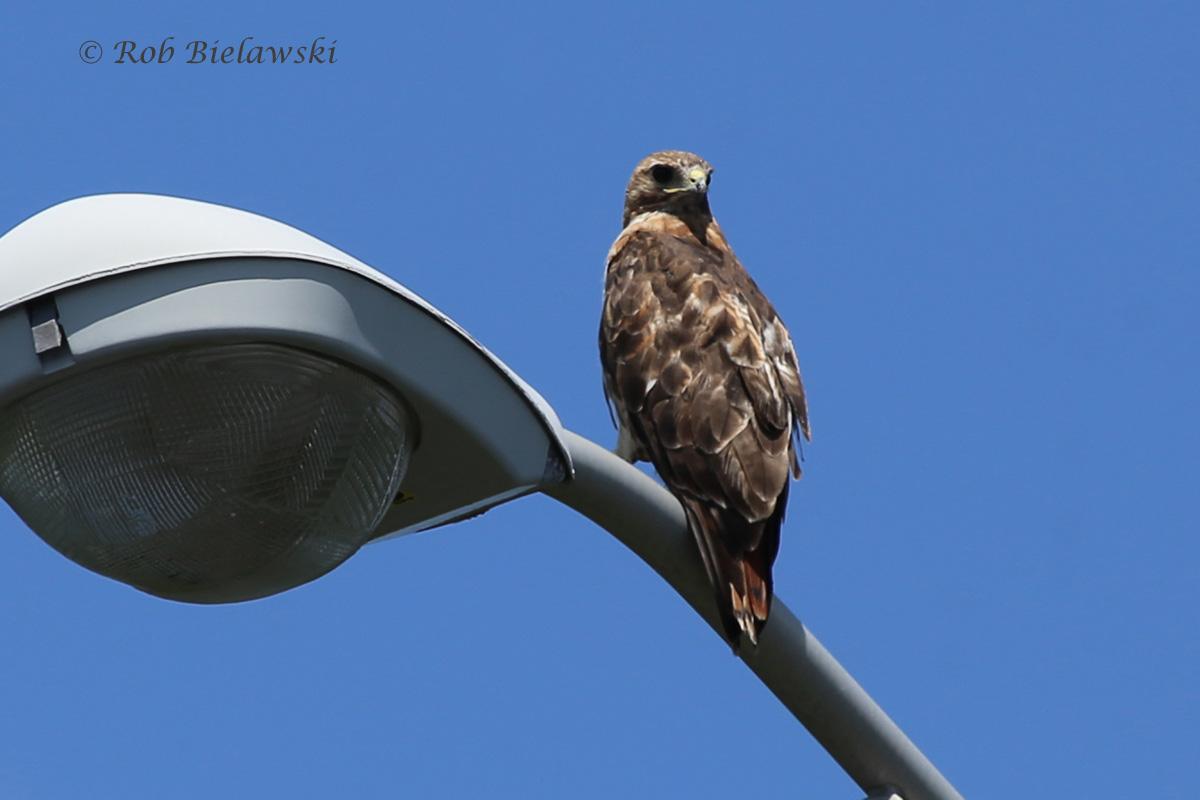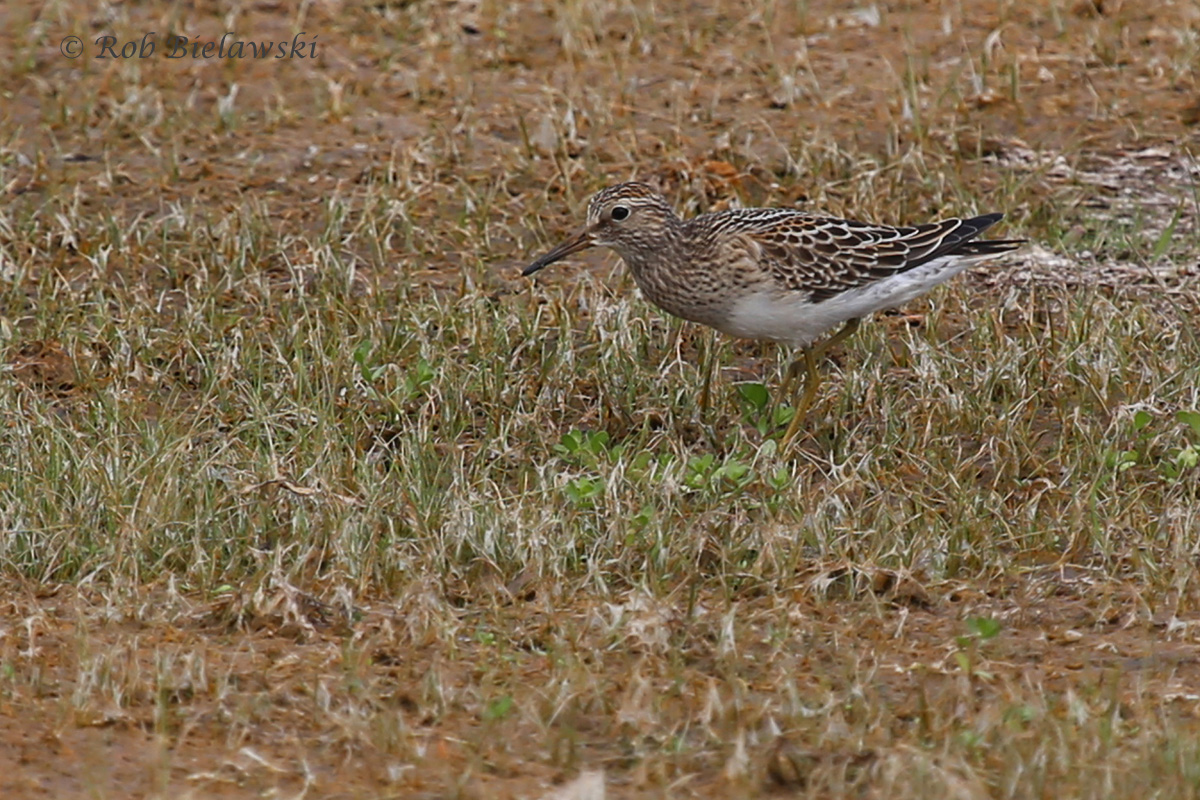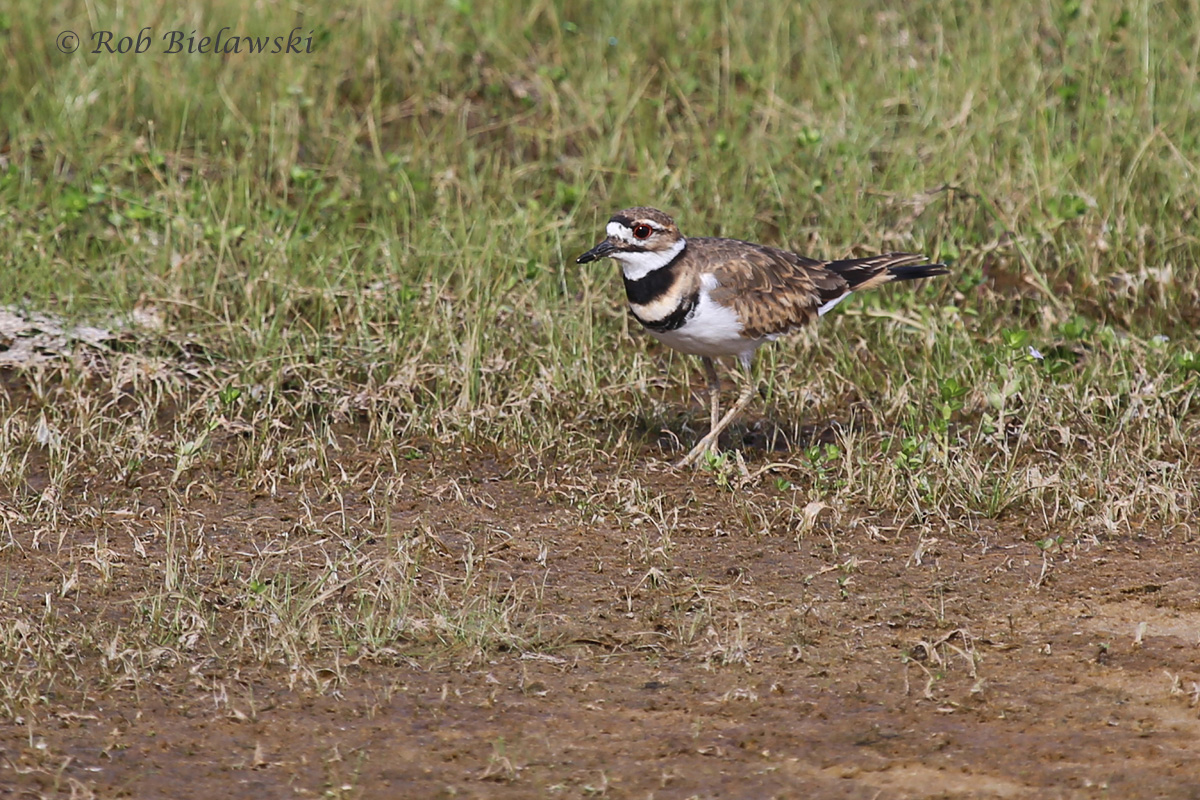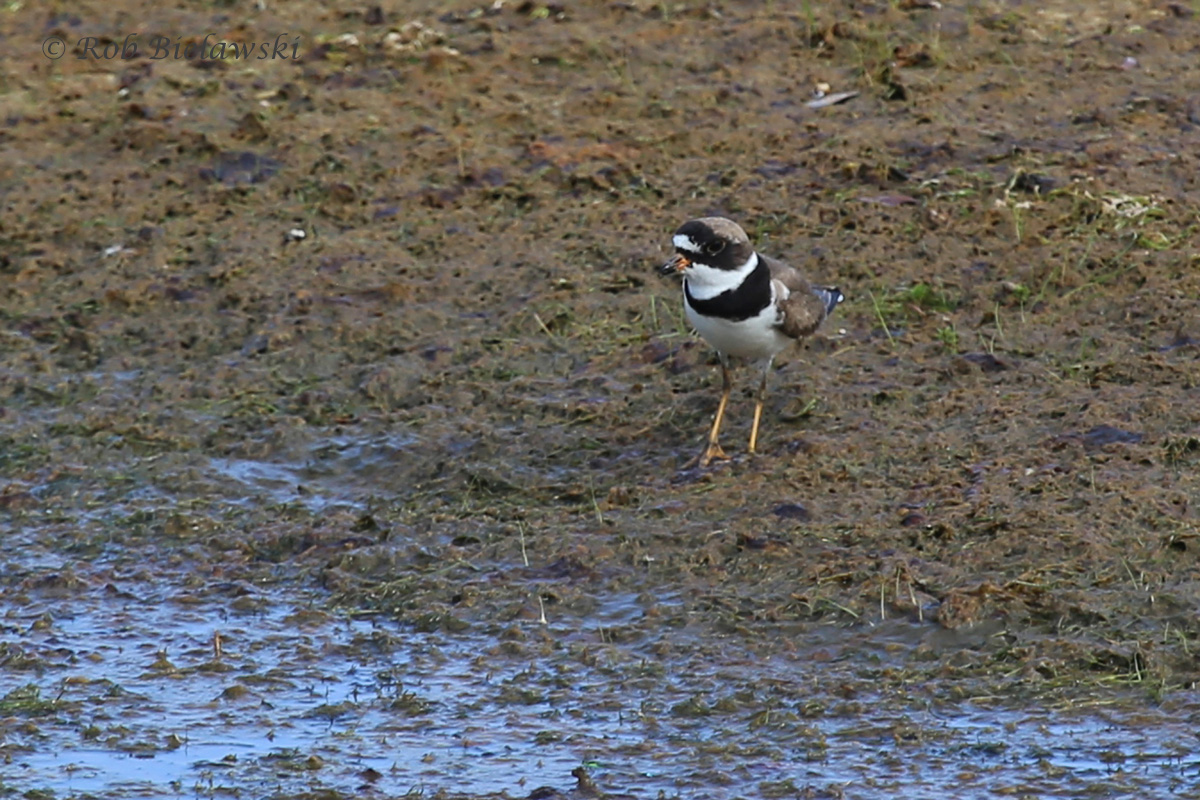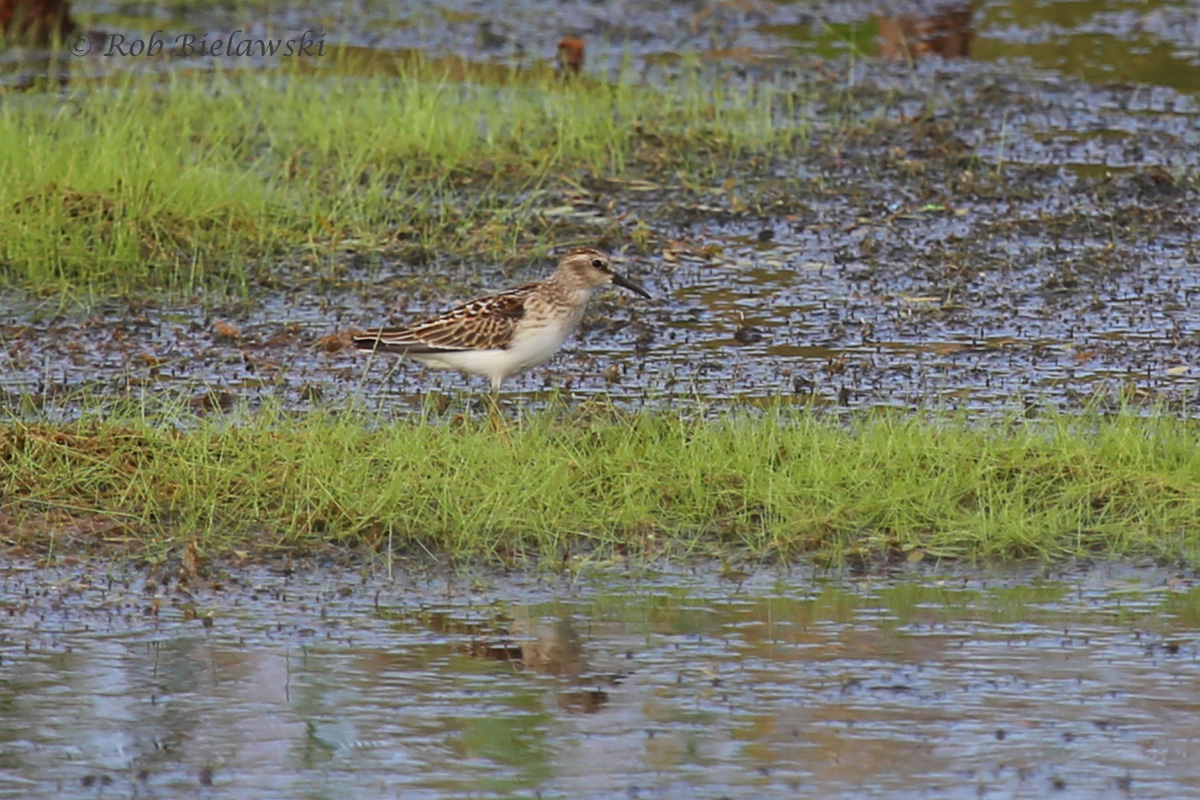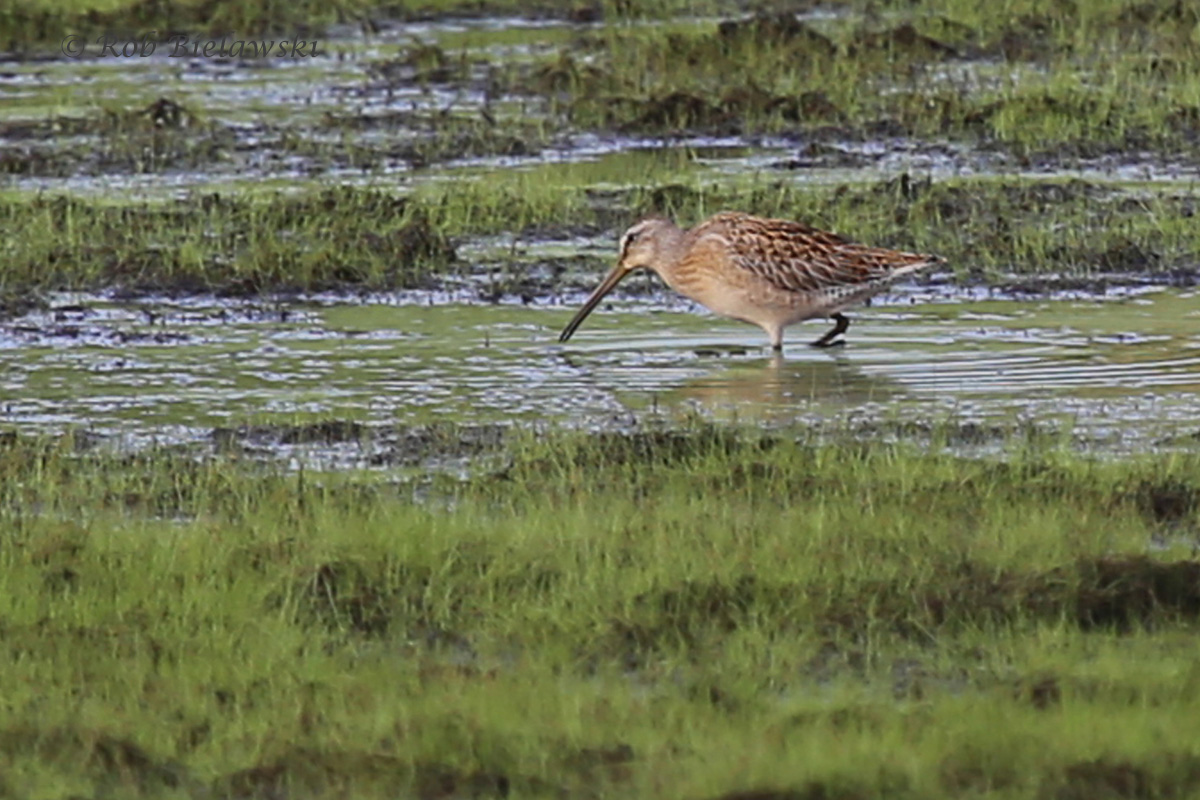Week Ending August 23, 2015
/As with the previous weeks, I didn’t get any serious birding in until Friday evening. However, on Monday evening, Ruth & I made a special trip down to Sandbridge to view the “blue tide” that has showed up along the beaches. Made up of Dinoflagellates, this blue coloration has been showing up when the sun drops down and the skies turn dark. They possess a bioluminescence that lights up the water, similar to the film The Beach’s depiction of what they called ‘plankton’. Several folks had posted photographs of the anomaly to Faecbook and the local paper even ran a couple articles about it. So Ruth & I wanted to check it out, and we parked near the large condominium tower near Little Island Park, walking south at about 9:15 PM towards the Back Bay NWR boundary line where I expected it to be extremely dark, and hopefully giving good views. Unfortunately, the winds over the last day must have shifted much of the Dinoflagellates out further to sea away from the coast. The blue wasn’t visible, but we did get to see how the sand beneath our feet glowed as we walked along, presumably also from some that had been washing in with the tide. They’re microscopic though and unable to be seen, so it wasn’t like we were stepping on a bunch of color creating crabs or anything. Speaking of crabs though, Ruth used the flashlight application on here iPhone to light up the beach around us on a couple of occasions, and we were always surrounded by Ghost Crabs. It reminded me a bit of the film, Pitch Black, in which people on an alien world are hunted by predators in the dark that fear the light, never staying far away from their torches. Fortunately for us, the Ghost Crabs aren’t dangerous, and they’re mostly just amusing to watch as they scatter away from you, though we did get close enough to actually touch a few. I was a bit bummed we missed the blue tide since I’d passed on going out the night before, which sadly was the last night it was visible. You snooze, you lose. After that nice outing though, Tuesday, Ruth & I also got out for a 4 mile walk through the neighborhood. I didn’t bring my camera on the outing, but we did see some of the typical suburban birds like American Robins, American Crows, Northern Cardinals, Gray Catbirds, and a few others. On Wednesday, we had an intense downpour hit right in Kings Grant, and while viewing the rainfall from the safety of my screened in porch, I watched a very vibrantly colored Eastern Box Turtle running for the cover of the woods behind the apartment. It was definitely the fastest I have ever seen a turtle move, and it made it quickly to safety out of the heavy downpour.
On Friday, as I’ve done the past 5 weeks, I went straight from work at 3 PM to Back Bay National Wildlife Refuge, arriving at about 3:40 PM. I parked on the east side of the visitor contact station, sprayed up with deet, tossed some sunblock on my neck and face, and started down the Loop Road towards the Dune Trail, with plans to walk the beach to False Cape State Park and back, as I’ve done 5 Fridays in a row. However, as I was passing by the marshy area to the southeast of the parking lot, my plans switched. On this marsh was a large variety of shorebirds, in good numbers. Willets, Yellowlegs, Short-billed Dowitcher, plenty of Least Sandpiper, and a number of Killdeer & Semipalmated Plovers were observed in a short period of time. Additionally, a Little Blue Heron juvenile, a Snowy Egret juvenile, and a Great Egret were all in close to the road, affording nice views of the characteristics that help separate these species from one another. While viewing a group of Least Sandpipers, I noticed one behaving strangely, with its wings flapping up in the air. As I viewed it through the binoculars, I couldn’t tell what was going on, but then realized that it was a Least, that was being eaten whole by a large Eastern Cottonmouth! I’ve never observed a snake predating on any bird species, so this came as a huge surprise to me. The wings were still sticking out of the snake’s mouth, and to my surprise, many other Leasts were in very close to the snake. You would think after they just watched their buddy bite the dust, that they’d at least move over a few feet away from the snake, but apparently not the case with these birds. Given the excitement that I found along this small marshy patch, I decided to forego the beach walk, and instead focus my efforts in the marshy patches along the East Dike Trail, as I had done last Sunday at the park. My hope was that the marshy fields might yield a Pectoral Sandpiper, which is the most ‘common’ bird I have yet to log this year in Virginia Beach, being reported to eBird in about 2% of the reports historically during the month of August. So having decided to do so, I headed south on the Loop Road, reaching the gate to the East Dike pretty quickly. At this point in the year, the impoundments of the park, barely viewable from the East Dike, are grown tall with vegetation, providing hiding places for deer and other animals, but preventing photographs like myself from seeing most of the wildlife that inhabits them.
Along the East Dike, I did see some Blue Grosbeaks, Indigo Buntings, Red-winged Blackbirds, which are all typical species here. The first marshy field that I reached was that at the dog-leg about 1.5 miles south on the East Dike. Here, the road takes two quick ninety degree turns, first to the west, then to the south. On the duneside corner of the road, there is a large field marsh, which during drier periods becomes more like a field with shortgrass growing in it. Semipalmated Plovers and Killdeer were instantly recognizable in good numbers out in the grasses. And, to my excitement, one larger shorebird species was also quickly observed. I walked around a bit to get into the closest spot for viewing, and when I got my binoculars on it, it was very obvious that the bird was a Pectoral Sandpiper, #186 in Virginia Beach on the year! Pectorals, which pass through our area in the fall on their southward migration, are larger than the Semipalmated Plovers, but slightly smaller than the Killdeer. Having both species present allowed for a good comparison in size. Also, the Pectorals have similar features to the Least Sandpipers, with their yellow legs the most obvious similarity. Seeing the two species together though, shows off just how much smaller the Leasts are, probably less than half the overall size, making the Pectorals look like giants by comparison. For about a half hour I watched this one bird, and took about 200 photographs of it as it meandered through the taller sections of grass searching for food that the smaller sandpipers weren’t feeding in due to the difficulty of using their short legs to propel them through the higher grass.
After taking a sufficient number of photographs to document the bird, I decided that I was going to head back northward towards the parking area, since this was my main target on the day, and I wasn’t sure of any other targets that might be in the vicinity to search out. On the northward trip I saw a few American Bullfrogs sitting out on the dry shorelines of the ditches that have now dropped in water level during the last few weeks. Also on the shorelines was a Spotted Sandpiper juvenile that I had also seen on the way south, watching as it fluttered along with it’s almost butterfly like wing motions. Some of the bullfrogs were pretty close and provided some nice photographs. Also, in non-bird sightings, I had a pair of Eastern Cottontail rabbits stick close to the Loop Road and again give me some nice shots before heading up to the parking area again. On the final marsh, near the parking area, most of the same birds were out again, though I didn’t notice any Cottonmouths feeding on birds this time. A mother & daughter walked past and chatted for a few minutes (finding out later in the HRWE group that it was Tina Masters), and they were hoping to see the Bobcat kittens that had been sighted a couple weeks back along the Bay Trail. Of course, Bobcats are tough to come by, but the youngsters might be a little more likely to be seen closer to where people are more common. I think the older they get, the more weary of humans they become, hence why it took 31 years before I finally saw my very first (and still only) Bobcat here at the park back in April. After viewing the marsh, I took a few photographs of a young Northern Mockingbird near the car, and then hopped in and headed back towards home.
On Saturday morning, I was driving down I-264 heading west between First Colonial and Lynnhaven when I spotted a hawk sitting up on a power pole. I was certain that the bird was smaller than the typical Red-tailed Hawks that are frequently observed on the poles, so I ran home, grabbed my stuff and headed back out to photograph it. I headed east this time from Lynnhaven, and found the hawk still on the same pole. I pulled off on the shoulder, tossed on the hazard lights of my car, and then got the binoculars up on the bird. I took about 25 photographs, thinking for sure it was a Red-shouldered, the only common hawk that I haven’t seen here this year, and headed onward towards my initial hiking destination of Pleasure House Point. Heading over the Lesner Bridge the water looked very high, and only a tiny spit of sand was viewable above the waterline where the sandbars are during lower levels. With no rush to reach this area since there would be no shorebirds present, I parked along Marlin Bay Drive. I walked into the park, hearing a couple of Eastern Towhees immediately, and the cawing of some American Crows. As I looked up to see the crows, a juvenile Cooper’s Hawk cruised on past me overhead, with the crows following in chase mode. When I’d walked up to the creek and turned eastward, the hawk again made a couple circles overhead of me, this time being chased by a pair of Eastern Kingbirds, which eventually halted their pursuit and landed atop a nearby pine tree. The Cooper’s Hawk sped off into the distance, disappearing from view into the forest across the second largest pond. From the trail, I also saw a juvenile Tricolored Heron fly on past over the creek, and shortly after ran into a juvenile Yellow-crowned Night-Heron and juvenile White Ibis sharing a tree roost together. The ibis is probably the same one that has been present at the park the past few weeks. And of course, the Yellow-crowns are quite common in the park this time of year. A single Laughing Gull was sitting out on the water of Pleasure House Creek, but gulls & terns were otherwise nonexistent at the park. I walked up to the main point, but realizing a lot of folks were out on the beach there, and more were out in the water on kayaks, I just turned around and headed back to the west.
While doing so, a pair of Tricolored Herons flew in over me, landing up in a pine tree, and being joined by a third juvenile. It seems all the Tricoloreds I’ve seen this year at the park have been immature birds, at least in the last month or so. I’m a bit curious where their more colorful parents might be hiding at this point in the season, perhaps they’ve already headed further south ahead of the youngsters to get some peace and quiet. Taking a few photographs of them, plus a Snowy Egret in the area, I headed into the woods briefly, hoping to spot a warbler or two. It seems some have been seen already as their migration will get started pretty soon. Karen Beatty had an American Redstart in her yard this week, which is one of the less common warblers here, though I’ve seen a pair so far on the year. I’m hoping more for Magnolia, Chestnut-sided, Black-throated Blue, Cape May, or Nashvilles, some of the real rare warblers, but late September and October will be the time to seek those out as they are found, I have a few locations upmy sleeves. Walking the remainder of the trail westward, I got some nice views of a couple American Goldfinches that had perched right above the juvenile White Ibis, just a few trees down from where I’d seen it initially on the day. Still no waterfowl (ducks/geese/swans) were encountered at the park, and I haven’t seen a single one since May here. Mallards are clearly populous at some of the local ponds, along with Canada Geese, but for the most park, waterfowl are tough to find here in summer. The only other species that even breeds here is the Wood Duck, and while you may see them at Kings Grant Lake year-round, the majority of their species are off in their more native, wooded marshy habitat deep in forests like the Great Dismal Swamp. Waterfowl will begin showing up in good numbers when October rolls around, yet another major migration to go hand in hand with the songbird migration. Additionally, raptors (hawks/falcons/eagles/etc) should begin in a month or so to show up in numbers around the area. The Hawk Watch sites in the state have begun recording observation, though I haven’t yet seen anything from the Kiptopeke Hawk Watch, which is the one nearest to me. Last year’s Hawk Watcher at the site, Katie Rittenhouse, actually has been doing work in western Minnesota this summer, and thanks to Facebook I got to see some photographs she took along the North Shore over the weekend, namely at Cascade River State Park, one of my favorite places to visit when I am back in my semi-home state. Anyways, I’m rambling, back to Pleasure House Point. After the goldfinches gave me some photographs, I spotted a Green Heron and an adult Yellow-crowned Night-Heron, but then headed back towards the car. On the way, I almost stepped on one very large spider, a species I’ve never seen before. I snapped a photo, but as yet have not gotten an identity on it, though it was quite ominous looking, so I stayed back from it (see photos below). After this, I called it a day and headed home to get out of the heat and relax. Also, I wanted to get a look at my hawk photos from earlier, however upon inspection, I was a bit bummed to realize that the hawk was not the Red-shouldered I thought it was, and was instead another Red-tailed Hawk, the much more common species here. It was apparently in heavy molt, losing its feathers and therefore looked a bit different than they typically do. Also, it had the brown belly band that the young Red-shouldereds do not have, so it was an obvious call once I looked at it long enough, and had folks online make the call as well. So, no new birds on the day unfortunately!
Early on Sunday morning, about 7:30 AM, I headed out towards Back Bay for another visit. Going into it, I was hoping perhaps I’d see a Marbled Godwit on the beach, or a White-rumped or Stilt Sandpiper along the East Dike Trail. First though, I decided to walk the Bay Trail since I’ve neglected it over the past couple of months. In the summer time, the Bay Trail is one of the most humid areas of the park since little wind can penetrate the thick vegetation that grows tall on both sides of it. Thousands of Dragonflies can be found here during July especially, zooming all around you while walking through it; it is pretty neat! However, bird activity falls off greatly along this trail after spring migrations are finished up, so it really isn’t productive again until fall migration begins. However, I wanted to give it a tree. Walking westward I mainly saw insects and arachnids. Black-and-Yellow Garden Spiders have set up webs all along the trail, and seemed to be doing quite well for themselves. I saw one spinning up a large grasshopper for a later meal, in fact, the grasshopper was larger than the spider. And these spiders get quite large, probably 4 or 5 inches from tip of front to back legs, they can be a little alarming if you aren’t used to them. After walking both directions and not really noting any birds outside of 1 Blue Grosbeak, I headed south again on the Loop Road as I’d done on Friday. This time, at the marshy patch southeast of the parking lot, I ran into Una Davenhill and her husband Hugh. This is actually the 3rd time in a month or so that I’ve run into Una out in the field, so she must have the same mindset I do when it comes to where we might find interesting birds.
Or it is blind luck, one or the other. The marsh again held some good variety, with Yellowlegs, and mainly Least Sandpipers, Killdeer and Willets, with one Great Blue Heron standing in close to the roadway. Heading down the Loop Road to the East Dike didn’t turn up much in the way of birds, probably given how hot and humid it already was. Along the East Dike, I saw some Great Egrets, another Great Blue Heron, and an Osprey out over the C-Pool, but not much else. Reaching the dogleg bend about 1.5 miles south of the parking area, there was again good numbers of Semipalmated Plovers and Least Sandpipers in view, but the Pectoral Sandpiper I had seen Friday was nowhere to be found this time. Here I again decided to head back north since there just wasn’t a whole lot going on. Back on the Loop Road, I did spot a Spotted Sandpiper, that I suspect could be the same one I’d seen Friday since this one also was a juvenile. After this though, I headed back to the vehicle, snapping some shots of the Great Blue Heron for my birding identification guide that I’ve been working on, so will add those this week. I headed out from the park, and gave another hopeful bird a shot. Marsh Wrens are currently the most ‘common’ bird I’ve yet to see this year in Virginia Beach, and since I didn’t see any at Back Bay where they are most commonly found, I thought perhaps I could find some along the roadways leading to the western shore of the bay in Pungo. I drove down Muddy Creek Road to Horn Point Road, but didn’t turn any up there. I did see some Eastern Bluebirds here though which was neat, and then tried Drum Point Road, but couldn’t spot any there either. Marsh Wrens are a bird I just recently added to my life list down at Mackay Island NWR, not far away as the wren flies, but in North Carolina, so a whole state away as the lines are drawn up.
With finding a Marsh Wren clearly not in the cards, I decided to go after another bird that is pretty high up on my target list, and one that I know was seen this week at Stumpy Lake: the Red-shouldered Hawk. Bob McAlpine spotted one at the park and posted it on Facebook, where it was verifiable as such, much better than a lot of the reports that I still suspect are Red-tailed Hawks (just like mine turned out to be yesterday). So I went up to Stumpy Lake to check it out. I walked the figure-8 trail through the woods, which were extremely quiet of birds, but full of insect song. Cicadas, grasshoppers, everything was singing. I did find one feeding flock of songbirds (Carolina Chickadees, Tufted Titmice, and White-breasted Nuthatches), but that was it along the 2 mile loop. After this, I tried my luck along the causeway outside the forest. Walking along the road I turned up a Chipping Sparrow that posed nicely for a couple of photographs, and I had a good chuckle to myself that this was one of the tougher species to locate this year, though I’ve now seen them on my past two visits to the park. Further down along the roadway I found a pair of Great Egrets, two Laughing Gulls, and very, very high up I spotted a Red-tailed Hawk circling around. The bird was so distance I could barely make out the reddish tint to its flared out tail feathers while looking through my binoculars. Shortly after, it was joined by another hawk, and again I was so sure it must have been a Red-shouldered Hawk. Being so high up, and continuing to ride on thermals even higher, I snappedwhat photographs I could, and headed home to view them without the sunlight making it impossible to see them. However, these photographs shared the same fate as my shots from Saturday. When I got home it was readily apparent that the second hawk I’d photographed was also a Red-tailed Hawk, so the Red-shouldered Hawk remains off my list for the year. Maybe in the next week or two I can knock this one out, or possibly during the raptor migration when perhaps more of them are seen in Virginia Beach.






